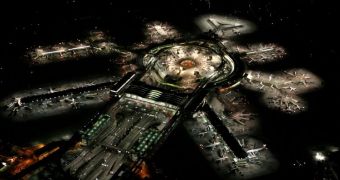The air-transport industry is known to be one of the greatest contributors to the amount of greenhouse gases (GHG) emitted in the Earth's atmosphere each year. Airplanes consume tremendous amounts of fuel to carry millions of people each year, and climate experts have been looking for ways of reducing the amount of pollution jet liners emit for many years. Now, according to a new idea, it may be that a smarter management of the way air traffic is conducted could result in greater savings than uncertain innovations that have yet to be developed, the BBC News reports.
Air-traffic control refers to a set of specific operations that dictate how airplanes are handled and directed from the ground when taking off, during flight, on landing, and throughout airport operations. A team of scientists at the Oxford University has found in an investigation that making air-traffic control more effective could have a significant and immediate effect on the amounts of GHG the aviation industry produces. Naturally, innovations are still needed, but management improvements could provide a strong, initial stepping stone. Dr. Chris Carey, the Oxford team leader, compares this idea to the “low-hanging fruits” in a tree also containing composite materials-based airplanes and biofuels.
“And they are measures that governments could make a condition of using their airspace,” Carey, who is also an Oxford Smith School of Enterprise and the Environment aviation expert, says. “Air Traffic Management plays an important role in reducing emissions,” Civil Air Navigation Services Organization (CANSO) expert Chris Goater adds. He believes that establishing more direct flight routes, and reducing airplane waiting times during the landing stage of their flight could contribute to reducing pollution by five to eight percent annually. The goal is to see that “emissions are reduced to 50% of 2005 levels by 2050,” he says.
“The inaccuracy of current control systems means planes must be given a wide berth to avoid collisions. If that was improved, landing and take-offs could be quicker, stacking would be reduced and planes could fly closer together by taking advantage of prevailing winds, just as Concorde did,” Carey adds. At this point, upon approach, airplanes need to circle the airports several times, before the runways are finally cleared, and they have sufficient room to land. At the world's largest airports, landings and take-offs take place only minutes apart, and handlers need to park and unload commercial flights very fast.

 14 DAY TRIAL //
14 DAY TRIAL //